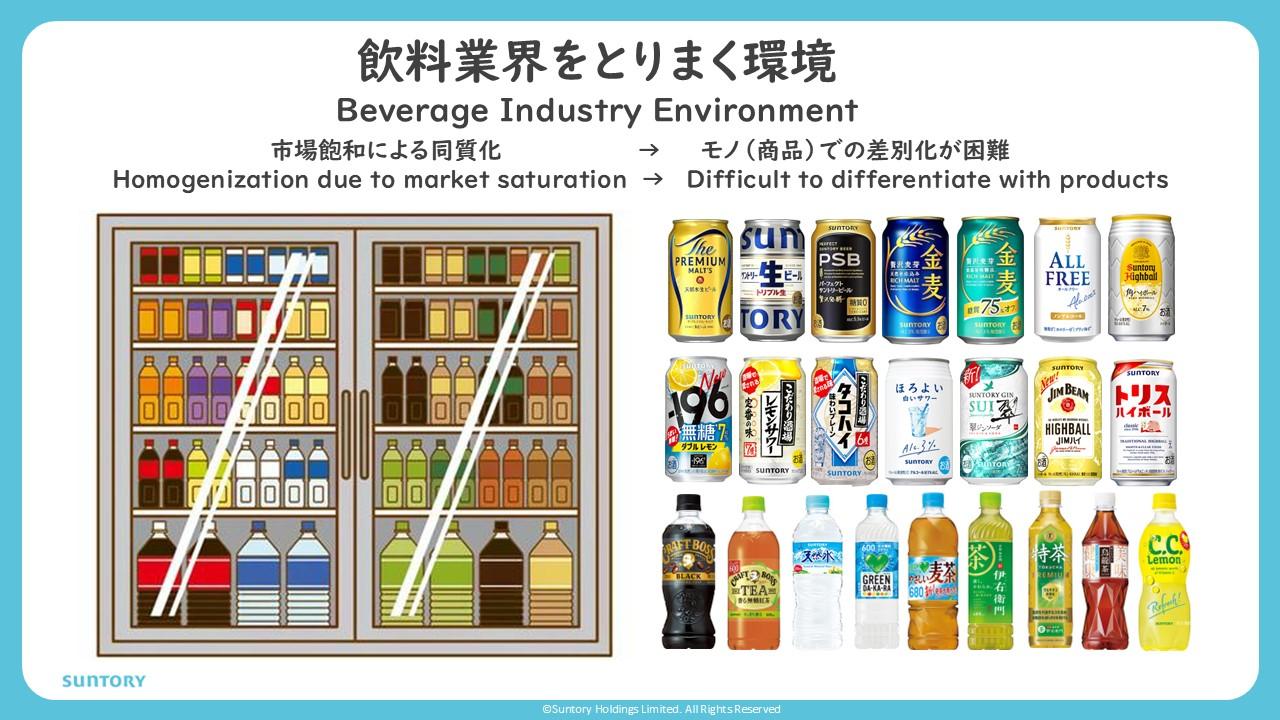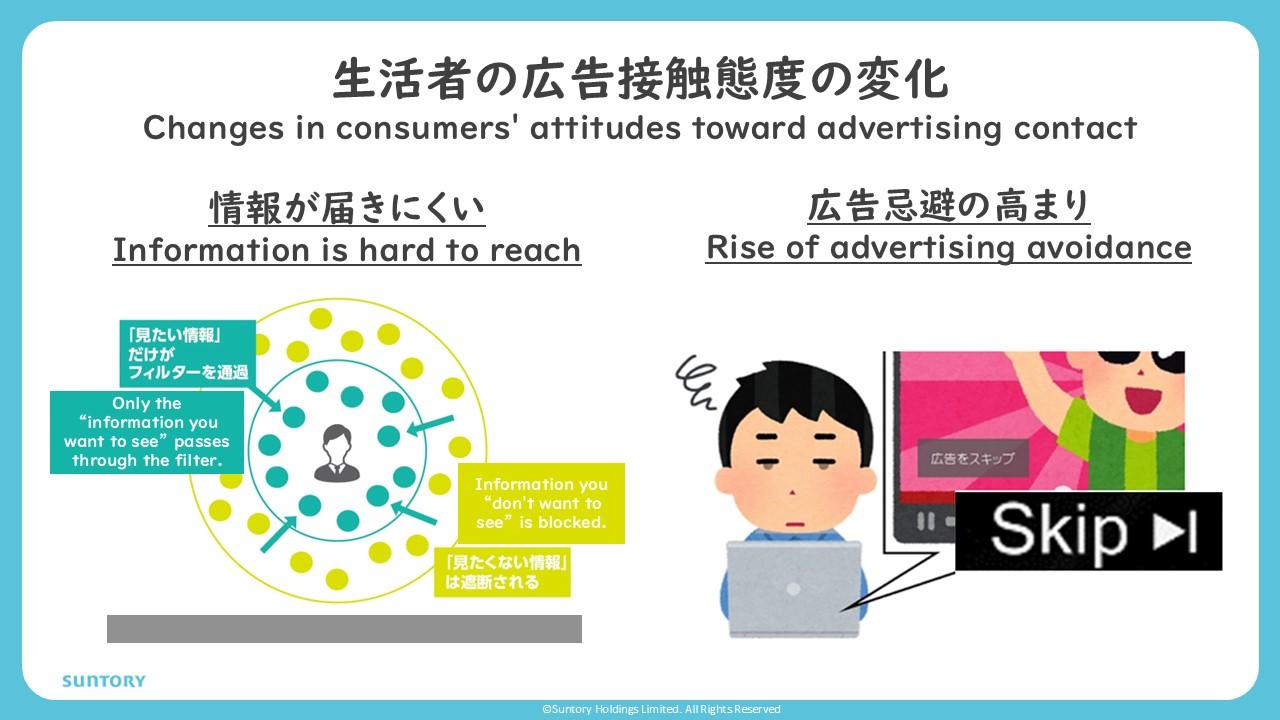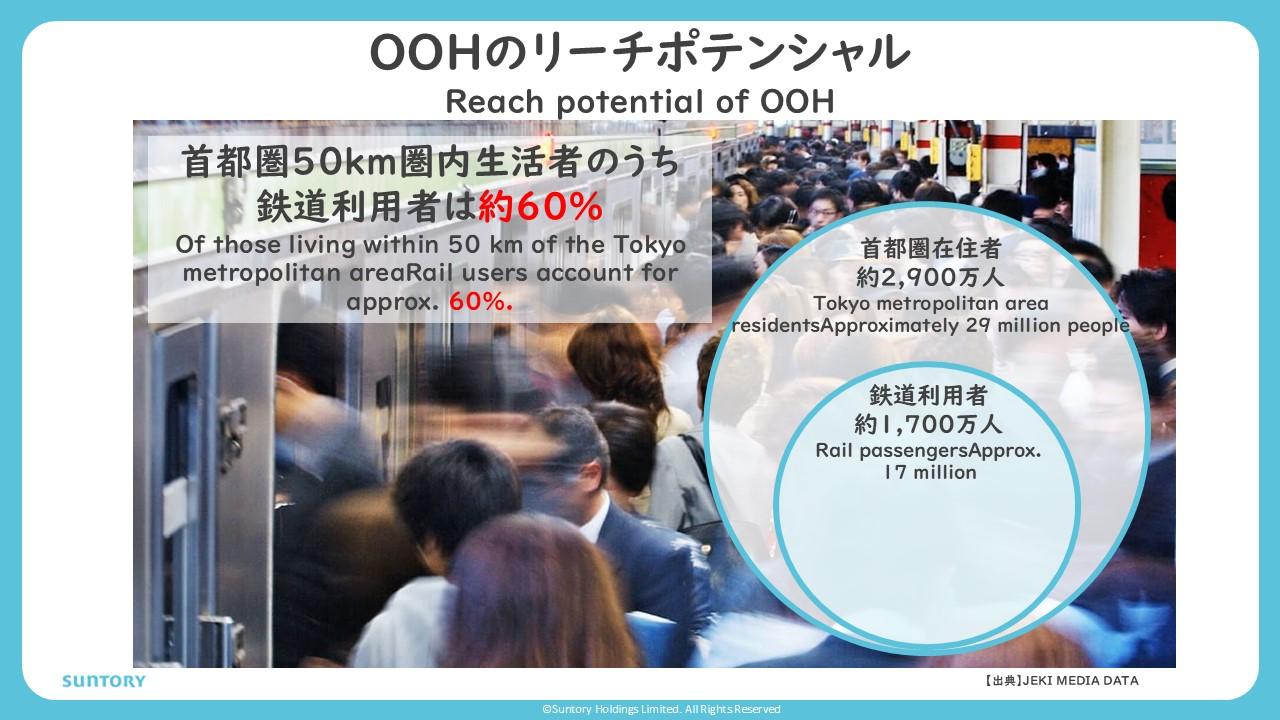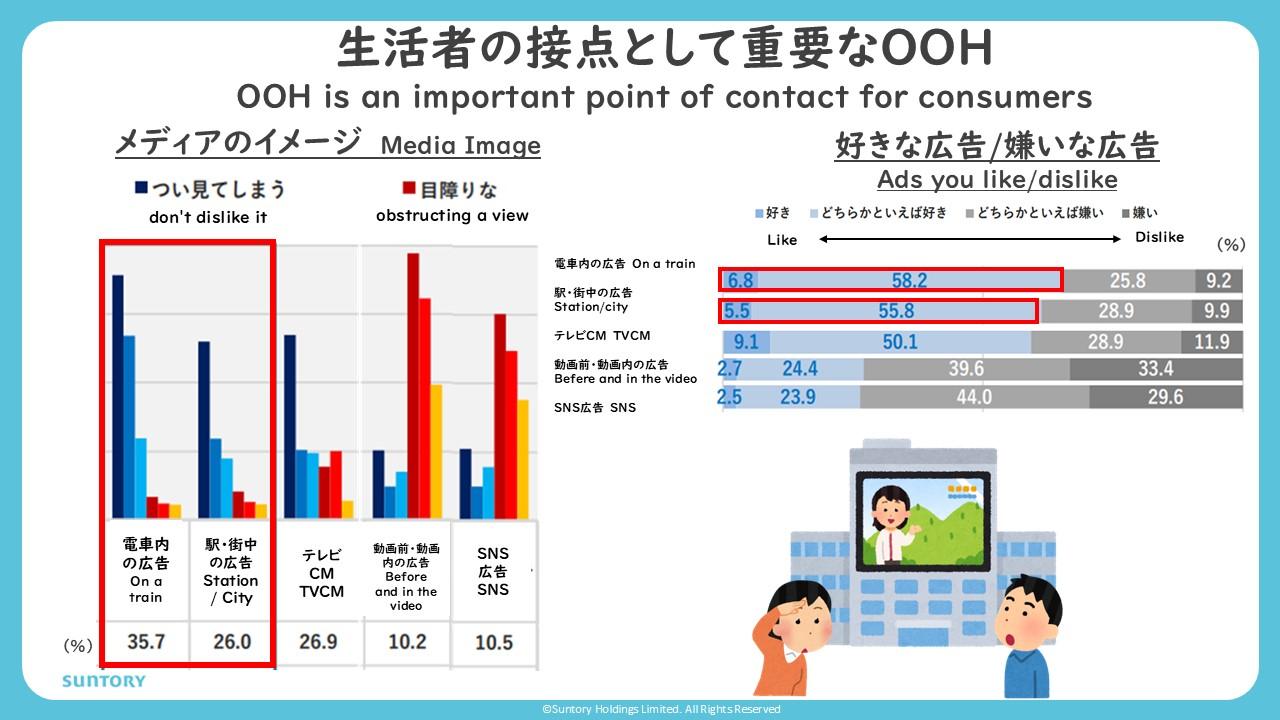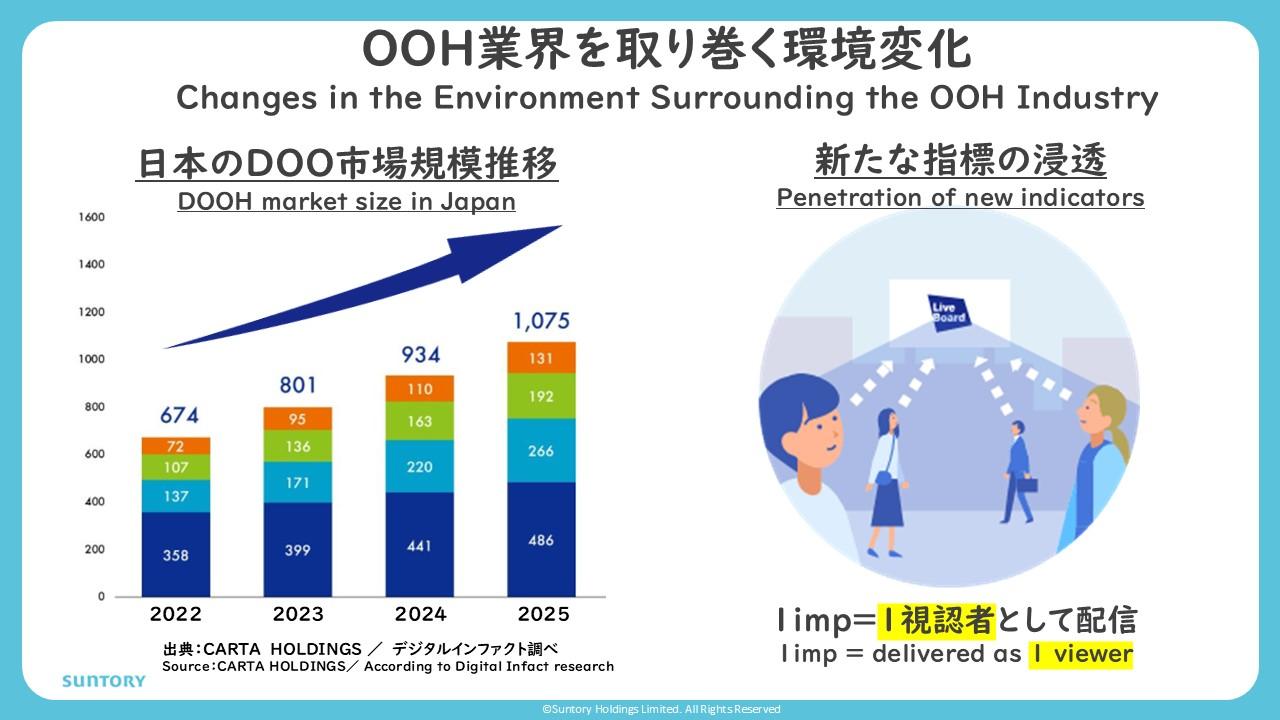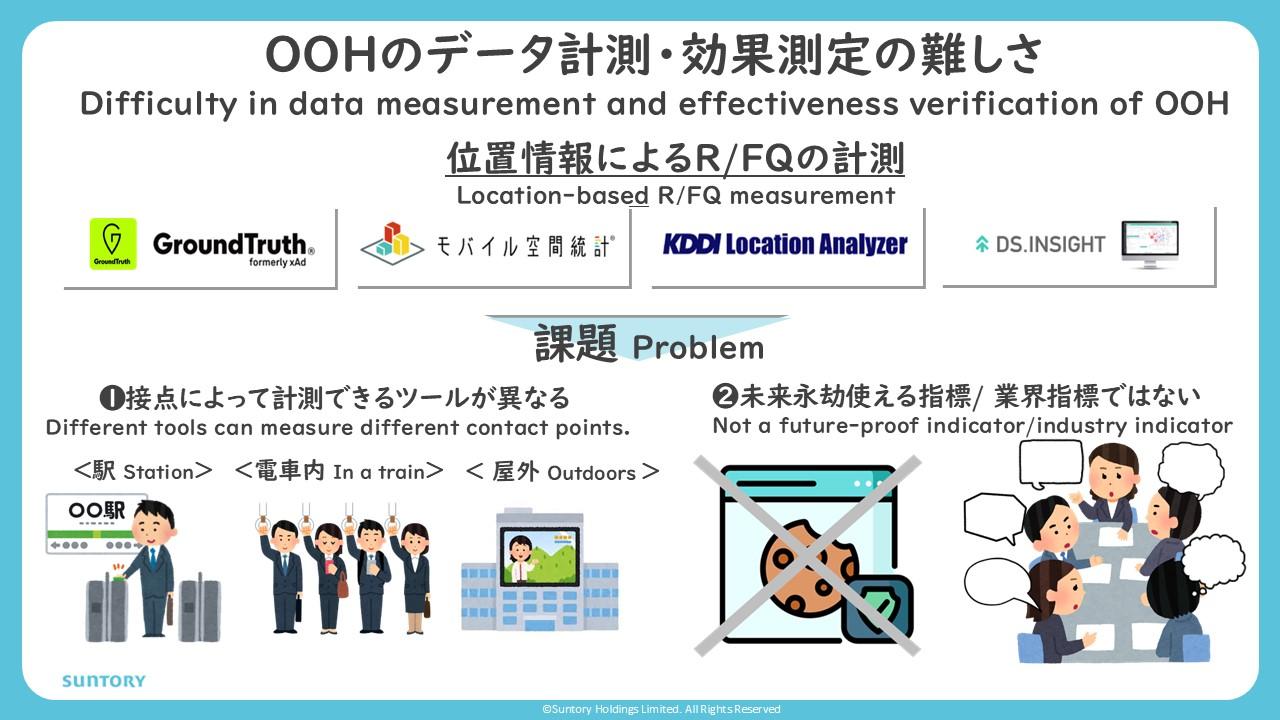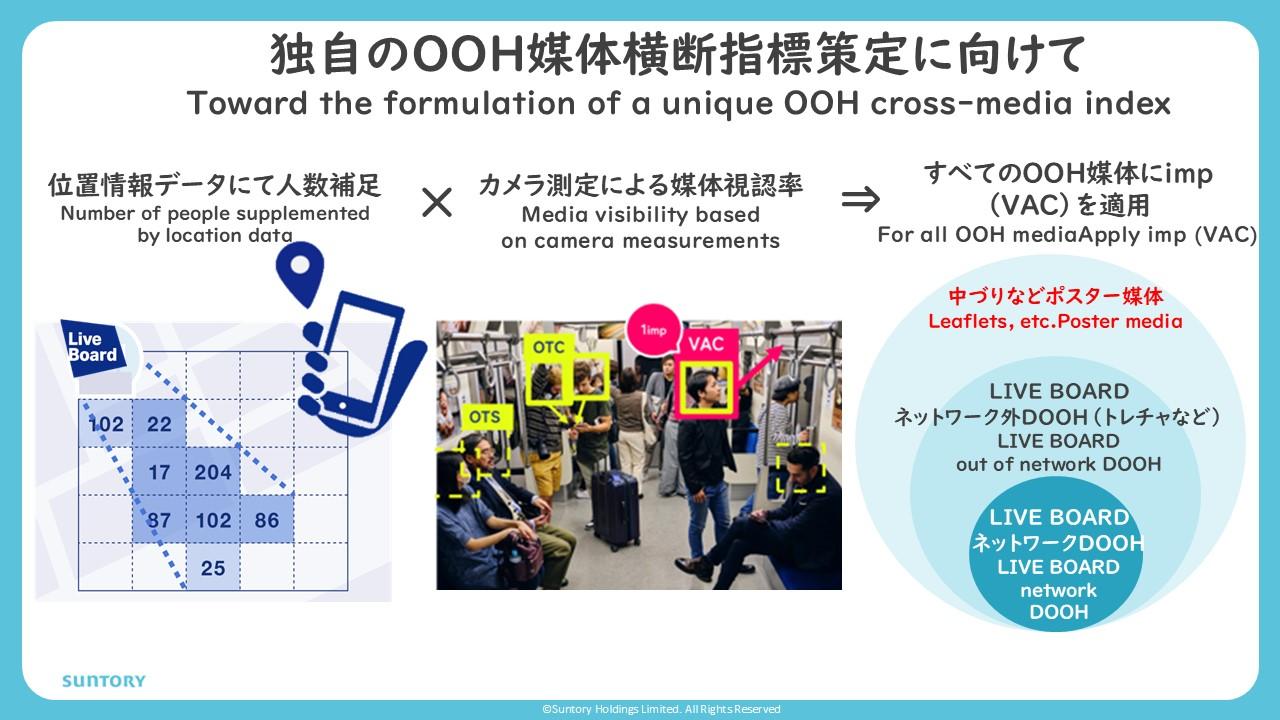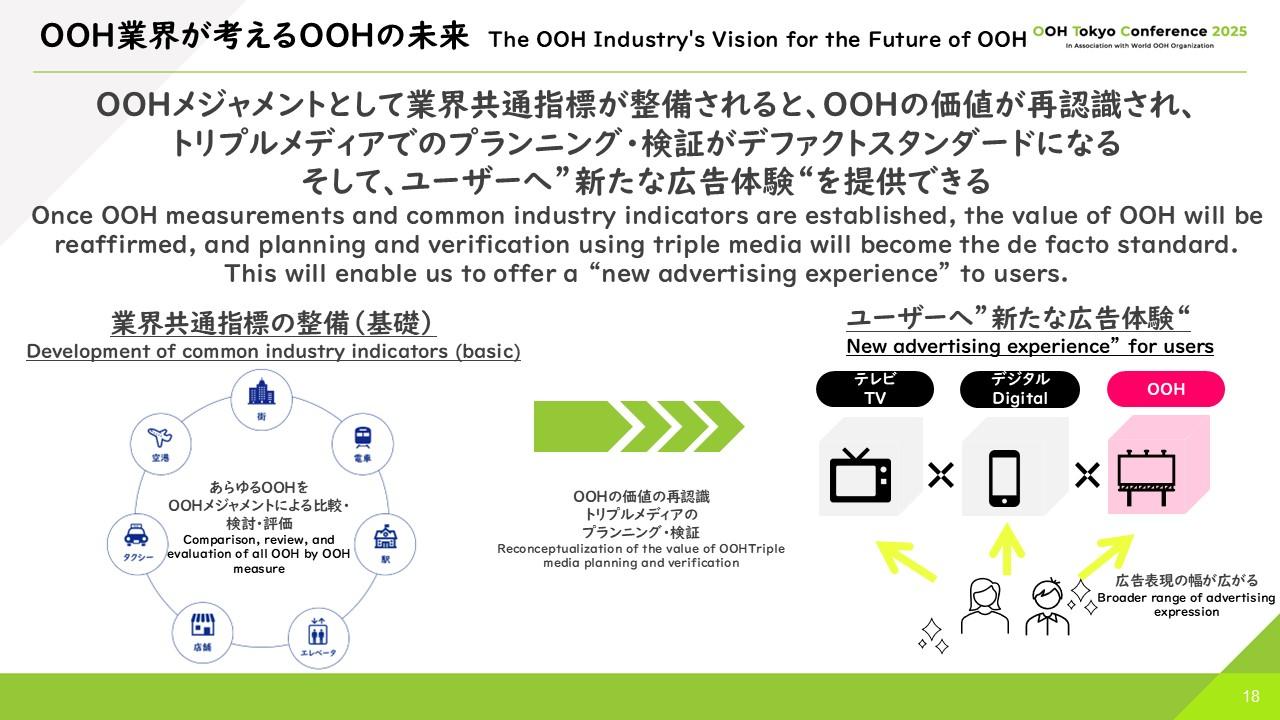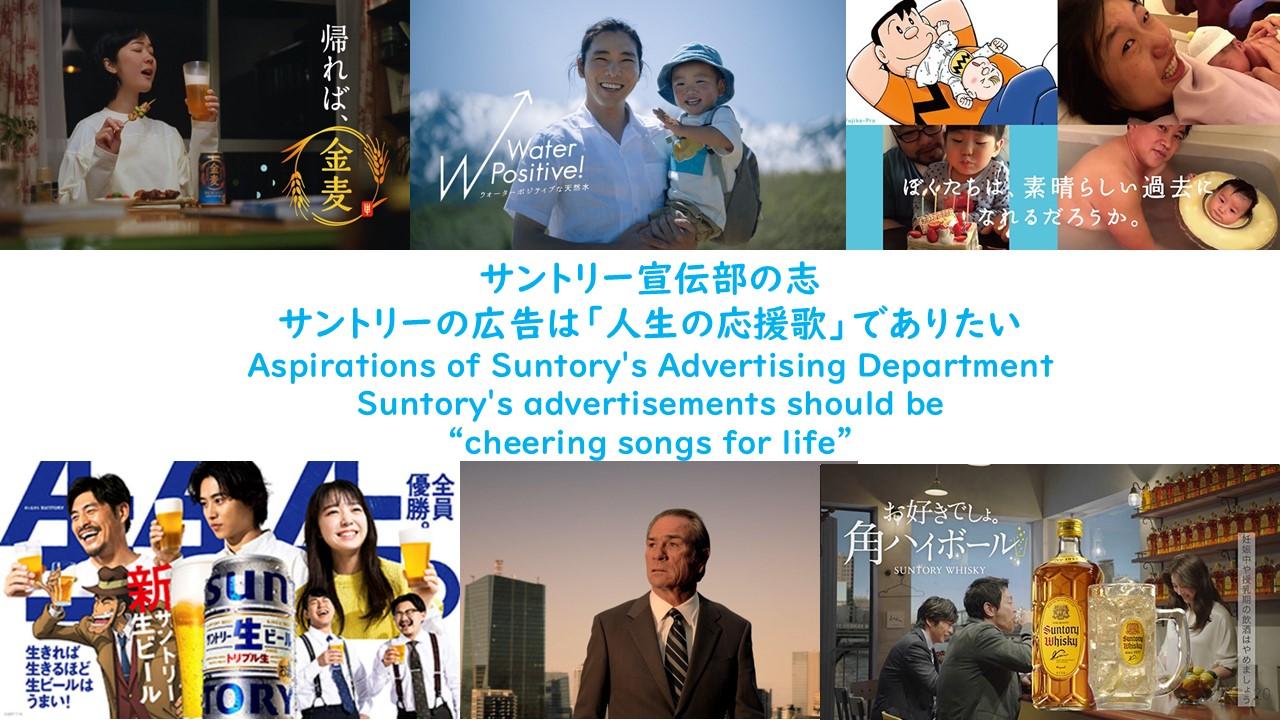Japanese Advertisers' Expectations for a Japan-Specific OOH Audience Measurement
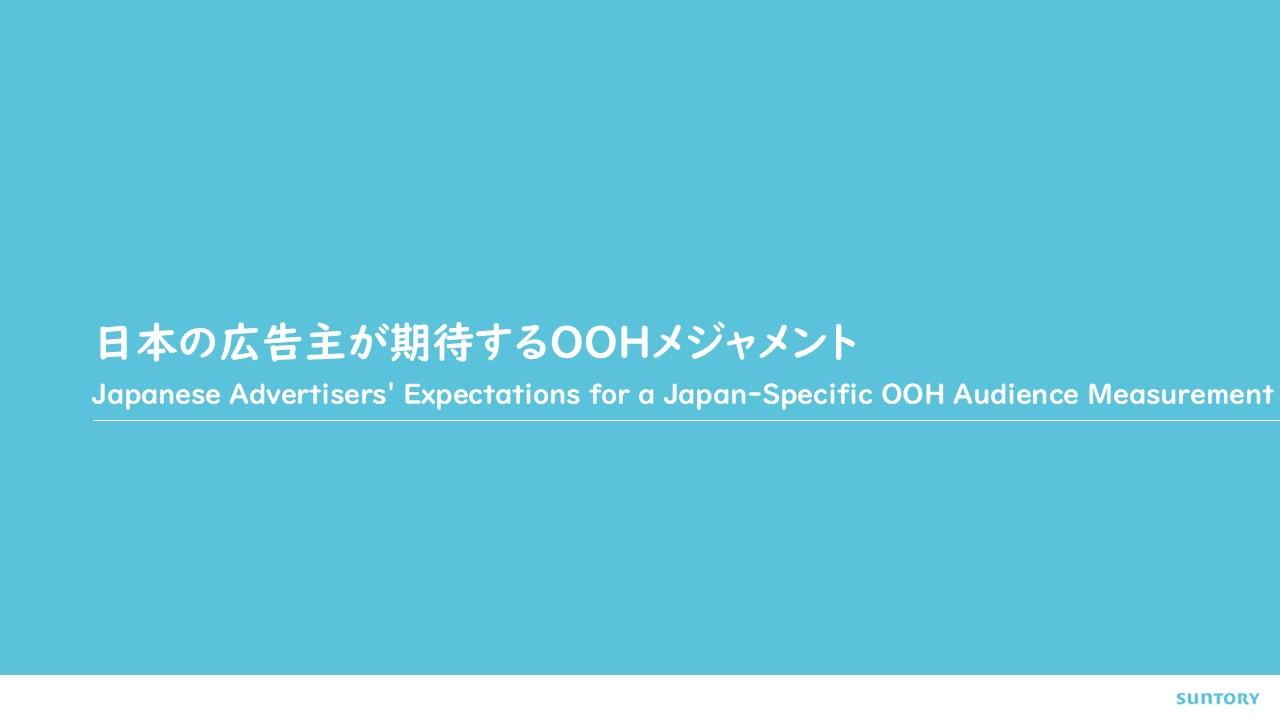
On Thursday, February 20, 2025, we participated in the "Japanese Advertisers' Expectations for a Japan-Specific OOH Audience Measurement" session at the OOH Tokyo Conference 2025. A report summarizing this content is now available.
▼Speakers
Risa Kanaya
dvertising Department, Communication Design Division, Suntory Holdings Limited
Satoshi Miyagawa
Member of the Board of Directors Head of Strategy, LIVE BOARD, INC.
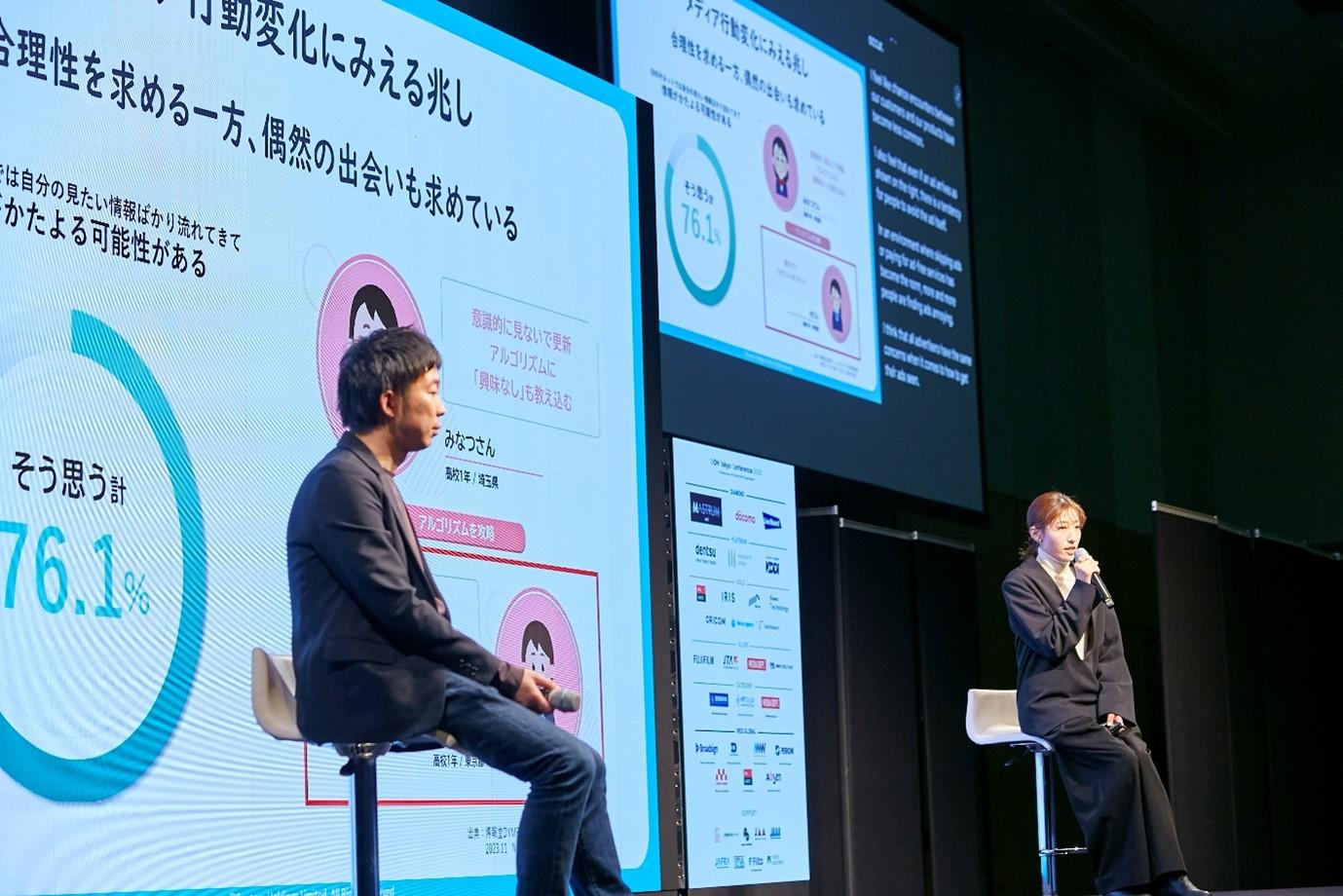
©OOH TOKYO CONFERENCE2025
Beverage Industry Environment
Ms. Kanaya
Suntory communicates with consumers daily through various media. First, I will explain the evolving environment of the beverage industry, including Suntory, and how these changes relate to the importance of measurement, which is the theme of this presentation.
The alcoholic beverage industry is facing the challenge of increasing commoditization and difficulty of differentiating products. We believe that the key to solving this problem is to increase lifetime value by creating fans who "like this company" and "like this brand." Of course, building fans doesn't happen overnight -- we believe this is precisely the mission of advertising.
Changes in Consumers attitudes toward advertising contact
Looking at how consumers respond to advertising, it feels harder than ever for ads to break through. It's often said that there's just too much information, so anything beyond what's necessary gets ignored.In digital media, algorithms create "filter bubbles" that reduce the diversity of information, resulting in only pre-determined encounters between customers and products.
Even when ads do get through, they tend to be avoided. In an environment where people skip ads or use ad-free paid services, more and more people find ads annoying. Advertisers are all facing the same challenge -- how do we get people to actually watch the ads?
However, recently we have seen a change in sei-katsu-sha attitudes toward media contact.
Data shows that about 70% of people perceive the information they receive as biased. Many people let algorithms learn content they are not interested in so that only the information they want flows to them. On the other hand, there are also those who dare to reset their social networking accounts when they become bored with biased information. While seeking rationality in information gathering, we are also seeing signs of people seeking chance encounters to avoid information bias. This present an opportunity for advertisers looking for reach new customers.
Changes in the Media Environment
The environment surrounding the media is also changing.
TV viewership has significantly declined over the past four to five years. Last year was the worst on record, especially among younger viewers.
Digital penetration has remained high, with smartphones and other digital devices reaching nearly everyone in the nation. As a result, while total usage time continues to increase, growth is slowing somewhat.. Also, the content that flows through people's timelines differs. Algorithms are optimized to only stream content that is of interest to each individual, and it is true that some people may not receive any advertisements at all.
Potential of OOH and points of contact with consumers
On the other hand, OOH is still something that has potential as a contact point for daily commuting to and from work. In particular, railroad users in the Tokyo metropolitan area account for approximately 60% of residents, and although the number of users temporarily plummeted due to the Corona disaster, it has already recovered. As far as Tokyo is concerned, the population is expected to increase over the next 1 0 years, and we expect the number of rail users to increase accordingly, leading to an increase in reach.
In addition, the sei-katsu-sha's image of OOH shows that they "end up looking at it " and "don't dislike it". Compared to other media, OOH has the characteristic of being less likely to be disliked by sei-katsu-sha because of its natural contact with them. For this reason, we view it as a valuable point of contact with consumers.
Changes in the OOH market
Ms. Kanaya
In terms of the OOH environment in Japan, DOOH has increased considerably in recent years from the predominant use of poster frames. Previously, the number of people around the media space was used to indicate reach, but now a new metric -- impressions -- is becoming more widely adopted.
As LIVE BOARD is in a leading position regarding this indicator, I would like to ask Mr. Miyagawa about changes in the market.
Mr. Miyagawa
Until now, each media had different indicators and modeling. On the other hand, only media that are linked to LIVE BOARD can now use the same buying methods a s digital advertising, thanks to the standardization of measurement methods based on DOCOMO data. As a result, sales channels for companies such as DSPs are being expanded. In addition, by providing data on the indicators to advertising companies, we feel that the movement toward integrated media planning for triple media (TV, digital, and OOH) is accelerating.
Importance of Integrated Media Planning
Ms. Kanaya
Given the changes in the current environment, we believe that we will not be able to compete simply by considering the efficiency of TV, digital, and OOH on their own. We believe it is important to reach customers with product information through multiple points of contact using a variety of media.
However, a major challenge is the lack of consistent data for OOH media. In particular, when aiming for integrated planning with TV and digital media, it is difficult to solve this problem without indicators that enable side-by-side comparison of reach and frequency, and we feel that the development of such indicators is an urgent task.
Difficulties in data measurement and effectiveness verification of OOH and current efforts
Suntory has been measuring reach and frequency using location information, but w e are aware of several issues. First, different tools can measure different media, and different measurement methods and indicators are used, so it is not possible to make simple side-by-side comparisons. Second, the data is not guaranteed to be usable forever, nor can it be used as a unified indicator for the OOH industry.
With the cooperation of LIVE BOARD, we are currently conducting a demonstration experiment to see if we can apply the VAC indicator, which is calculate d by multiplying the number of people measured by location data with the camera-measured visibility rate, across all OOH media. We are currently working to unify the index across all OOH media, including not only DOOH in the LIVE BOARD network, but also OOH outside the network and poster media such as reprints.
Suntory's vision for the future of OOH
Ms. Kanaya
As an advertiser, what are your expectations for the future of OOH? First of all, I believe that we must be able to visualize the number of people who contact us, which is currently in progress, and in addition, we must be able to measure the effectiveness of OOH based on the number of people who contact us in the future. Once these elements are in place, we expect to be able to conduct integrated planning and verification with TV and digital based on the data.
We would be happy if this one could run parallel to the movement of the OOH industry. In this regard, we would like to ask Mr. Miyagawa of LIVE BOARD for his opinion on the future that the industry is aiming for.
The OOH Industry's Vision for the Future of OOH
Mr. Miyagawa
We believe that the value of OOH will be reaffirmed when the OOH measurement standard is developed as a common industry indicator. On the other hand, the measure is only a foundation or base. Based on this, we believe that planning and verification using the triple media of TV, digital, and OOH will become the de facto standard. Once it becomes the de facto standard, various advertising companies and advertisers will be able to design advertising experiences across all three media channels.. As more people think about it, the range of advertising expression using TV, digital, and OOH will grow. We believe that this will enable us to provide consumers with a more sop histicated advertising experience. Through the committee and the OOH industry as a whole, we aim to create a world where consumers can have exciting and thrilling advertising experiences.
Suntory Advertising Department DNA
Finally, let me talk about the core values that Suntory holds in its advertising activities. The first is the creation of a rich lifestyle culture. As a manufacturer, we are a company that sells products, but we also aim to foster a rich lifestyle culture through our products.
The second is the desire to approach things with a human touch. We have a strong desire to be close to people at all times. Being close to people means understanding the context of the time and communicating relevant messages.
The third is "Etwas Neues," which means "something new" in German. It encourages people to take on new challenges that do not yet exist in the world. Even if these challenges do not immediately yield results, the current trend in the advertising department is that the act of taking on a new challenge is valuable in itself.
Our aspiration is that Suntory's advertisements should be a cheer for life. In the Advertising Department, new members are taught by their seniors that advertising should be a cheer for life.
Attractiveness of OOH and future prospects
In Japan, we're fortunate to operate in an environment where alcoholic beverage advertising is widely accepted. Even in an environment where it is difficult for advertisements created with strong intentions to reach the target audience, as I mentioned earlier, I believe that OOH is a medium that has the potential to create accidental encounters and be received favorably.
The most attractive thing about OOH is that it is a serendipity media. For those of us in commoditized markets, we believe that serendipity is the key to creating new customers. The more digital advertising advances -- and the more hyper-targeted it becomes -- the more valuable OOH becomes for creating unexpected, meaningful connections. While it is important to maintain data, I would like to continue to deliv er advertisements that move the hearts of consumers through OOH, without being limited by data alone.

